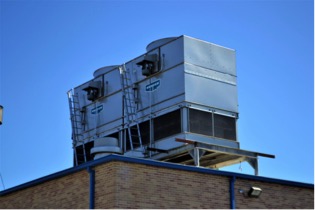What Is HVAC?
HVAC or the Heating, Ventilation And Air Conditioning System aims to create a comfortable environment for the user. HVAC provides better indoor air quality inside buildings as well as in vehicles. It also regulates the indoor temperature and moisture. HVACs form an integral part of many structures: residential and industrial.
HVACs do not follow the principle of one-size-fits-all. People living in different areas have different and particular heating and cooling needs.
How Does It Work?
HVAC is a common unit that caters to both your heating and cooling needs. It consists of a single blower that moderates the temperature throughout the building with the help of interconnected ducts. A ductless system can also be installed for different parts of the building.
The HVAC system works with the help of a series of steps. The first step is ventilation, which involves exchanging the existing air with fresh air from inside or outside the building. The air handling unit collects the fresh air, and a filter inside it removes all impurities. The purified air is then adjusted for temperature and humidity levels and then released. Suspension supplies Australia can make the process of HVAC installation much easier.
Common Mistakes to Avoid
The system may be inefficient if you don’t correctly follow the steps of installation. There are some common mistakes that people tend to make, some of which are mentioned below:
1. Forgetting to calculate the load
Before you start the installation process, you must remember to check the load capacity. Calculating the load from the beginning can save you from overload and a subsequent power blackout. Large scale cooling and heating operations must be extra cautious.
Whether the system is a new one or a retrofitted one, you need to check the load before you start using your HVAC. It helps to mitigate risk and also ensures compliance.
2. Not Choosing the return air duct’s location carefully
The return air ducts should be big enough to allow an uninterrupted flow of air. Place the air ducts in a location where the air passing through them faces no obstructions such as furniture or grills.
Ideally, you can use any space in the room that can direct return air from one part of the house to another. The best place for a return air duct would be on the wall opposite to the one which has furnaces or air conditioning bringing in the supplied air. Many people end up installing the return air duct in any available open space, but this is not the most efficient solution.
3. Not planning the disposal of condensate carefully
HVACs feature a system which collects the byproducts generated while air conditioning or heating. These byproducts called condensate need to be disposed of properly. Condensate needs to be disposed of properly. The system consists of a pan that collects the condensate and a piping system that ensures its effective disposal.
While installing the condensate disposal, you should ensure that it is not in a place where it can cause inconvenience to others. You should avoid areas where erosion or leakage could take place. Similarly, if the condensate enters the drainage system, piping should ensure that waste fumes do not enter the system. Never connect the drain line to a closed system. Finally, the condensate drain line should keep with the local area codes.
4. Thinking that bigger air conditioners are better
Many people believe buying a bigger air conditioner is the key to efficient cooling. But if you buy too big of a system, it may cause a short circuit. Moreover, a large air conditioner will only release short bursts of cool air and then shut off instead of providing continuous cooling.
It’s harder to control the humidity level with such sporadic cooling. The air conditioner must run for a more extended amount of time to ensure that appropriate dehumidification takes place.
You can determine the appropriate size of the air conditioner by calculating how fast the interiors of the building get heated.
5. Using refrigerant pipes that are too long
The pipes connecting the indoor and outdoor units of the air conditioner should not be too long. Longer pipes may delay the cooling process by increasing the length of the path that the air has to travel. Often, the cooling cycle may not even be complete.
As a result, the system will have to remain running for an extended period. This would not only drain higher amounts of energy but also cause your system to wear out sooner.
6. Not sealing the ductwork
Sealing the ducts may not be on the top of your list of priorities, but it is one of the most important things to do. If you don’t seal the ducts, leakage may occur, which could cause a short circuit or damage the entire system. Repair work which follows can often be quite expensive. It is best to use high-quality material to seal the ducts at the very start.
7. Ignoring the ventilation
Many people choose to focus on HAC, treating ventilation as a secondary requirement. This can be quite harmful as newly constructed houses are so tightly built that they usually have poor natural ventilation. Mechanized ventilation allows you to have a comfortable stay without interfering with your building’s layout.
Poor installation can result in several problems such as inefficiencies and a shortened lifespan. If your system is continuously facing inefficiencies, you may end up spending a lot on its repair. Thus, not following proper installation protocols can prove to be quite expensive.
